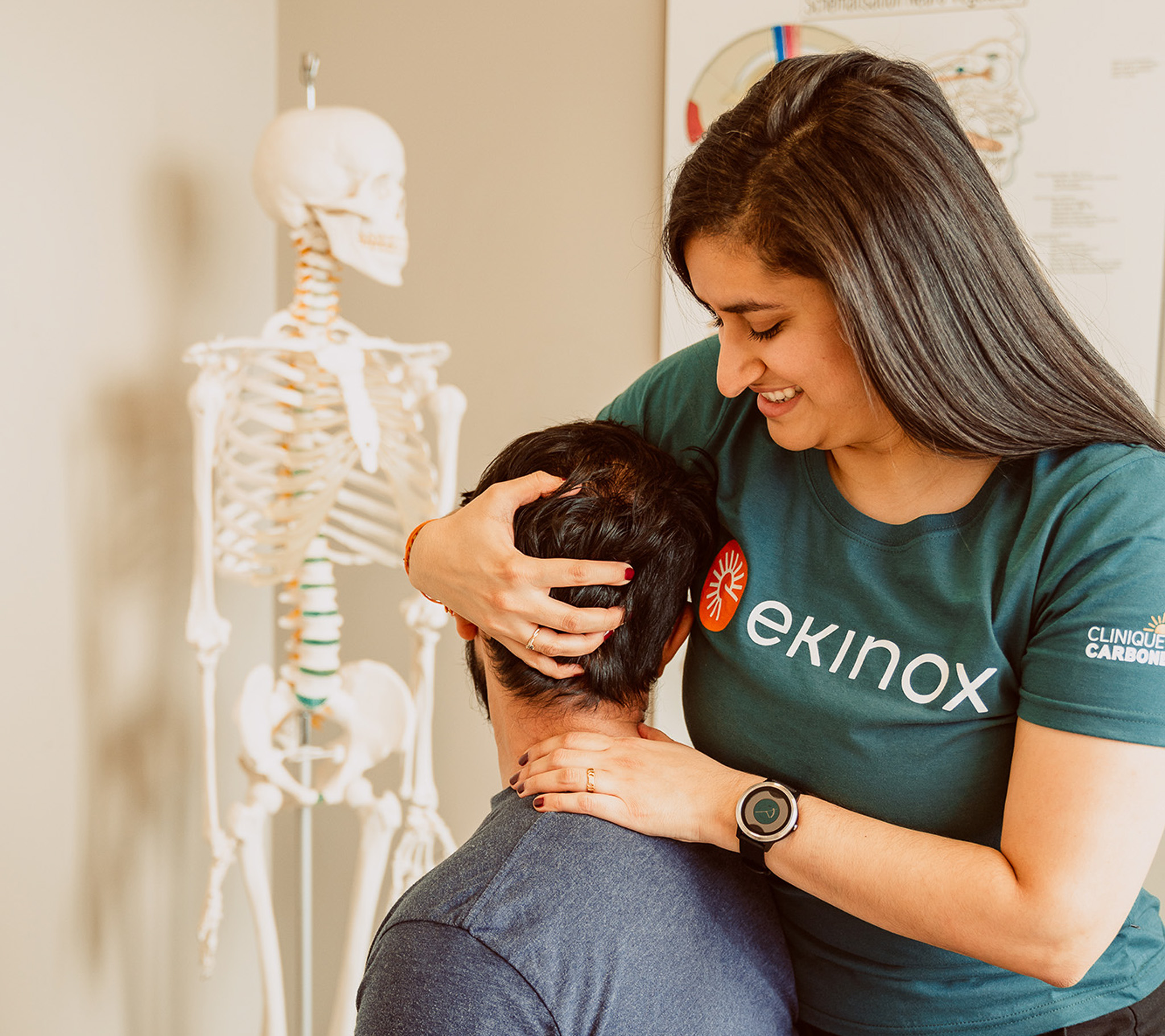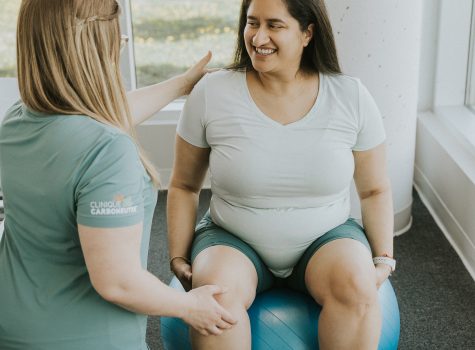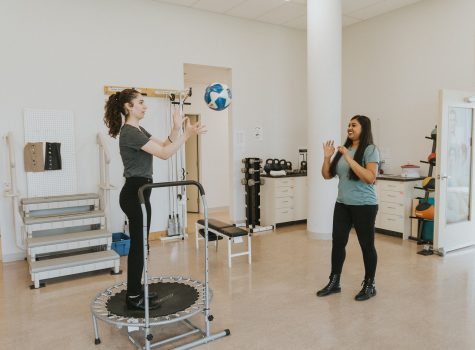
Did you know that 99% of women and 93% of men will experience a headache at least once in their lifetime? Therefore, it’s very likely that you have experienced this common pain at one time or another.
Several types of headaches exist and can vary in intensity, duration, location and characteristics. We will explore three different types of headaches to better understand the origin of your pain and see how physiotherapy can help.
Cervicogenic headaches
Cervicogenic headaches are of cervical origin, i.e. caused by pain originating in the neck. They can last from one hour to several weeks and are often felt on only one side of the head.
The trigeminal nerve, which is responsible for the sensation in the face, plays an important role in this type of headache because its nucleus extends to the third cervical vertebra. Nerve signals (afferences) from the face and from the neck are therefore transmitted to the brain through the same communication pathway, which makes it difficult to determine the exact origin of the pain. In other words, facial pain can cause neck pain and vice versa.
Factors that contribute to this type of pain are static posture (for example, working at a computer), cervical trauma (whiplash) and car accidents. In fact, 53% of people who have been in a car accident can develop this type of headache. If there is an abnormal delay before the headache appears, it is probably not a concussion.
In physiotherapy, we can work on neck mobility and stability with strengthening exercises. We can also provide exercises to improve your posture or breathing to treat the problem at its source.
Tension headaches
In 42% of cases, it is a tension headache that can last from 30 minutes to 7 days. This headache is the most frequent and causes three times more absenteeism from work than migraines!
Tension headaches can be bilateral and are characterized by a feeling of pressure or tightness, with mild to moderate intensity that does not worsen with daily activities. People who suffer from these headaches tend to have a lot of trigger points, places in the muscle that are very painful and that will create irradiations to the head.
In physiotherapy, we can help you reduce tension and work on your muscle balance. By identifying the factors that aggravate your headaches, we assess your posture and breathing to prescribe the appropriate exercises.
Migraines
Migraines are headaches that affect mainly one side of the head. Women are more likely to suffer from them (14-25%) than men (7-9%) and only one third of people with migraines are diagnosed.
There are four phases to migraine. The prodrome can last from a few hours to a few days and can include fatigue, irritability, sensitivity to light, frequent yawning or even the need to urinate more frequently.
There are two types of migraines, with or without aura. The aura is the second phase and generally precedes the attack by 5 to 60 minutes. It is characterized by visual, sensory or language symptoms that announce the migraine. For example, warning signs may be small bright or flashing spots, a feeling of having a drop of water in the eye, tingling or a funny sensation.
The third phase is the actual migraine, also called the migraine attack, and can last from 4 to 72 hours. The moderate to severe headache may be accompanied by stiffness, nausea or vomiting.
Finally, the postdrome may last 24 to 48 hours after the migraine attack and may include fatigue, difficulty concentrating, and a state of depression or euphoria.
Characteristics of migraine
Changes in habits, such as lack of sleep, missed meals and stress can cause migraines. 93% of migraine sufferers have at least three of the following characteristics: cervical dysfunction, decreased mobility in the vertebrae or neck, increased presence of trigger points and tenderness to palpation in the neck. These are all factors that can be worked on in physiotherapy and that could help reduce the intensity or frequency of your migraines.
Whether you have cervicogenic headaches, tension headaches or migraines, physiotherapy can help. If you are one of the majority of people who suffer from headaches on a daily basis, don’t hesitate to make an appointment with our physiotherapists.
Sources:
- Smetana GW. The diagnostic value of historical eatures in primary headache syndromes. Arch Intern Med 2000;160:2729-2737.
- Ferrante T, Manzoni GC, Russo M, et al. Prevalence of tension-type headache in adult general population: the PACE study and review of the literature. Neurol Sci 2013;34:l37-l38.
- Rasmussen BK, Jensen R, Schroll M, Olesen J. Epidemiology of headache in a general population – a prevalence study. J Clin Epidemiol 1991;44(11):1147-57.
- Stovner L, Hagen K, Jensen R, et al. The global burden of headache: a documentation of headache prevalence and disability worldwide. Cephalagia 2007;27:193-210.
- Woldeamanuel YW, Cowan RP. Migraine affects 1 in 10 people worldwide featuring recent rise: A systematic review and meta-analysis of community-based studies involving6 million participants. J Neurol Sci 2017;372:307-315.
- Luedtke K, Starke W, May A. Musculoskeletal dysfunction in migraine patients. Cephalagia 2017:333102417716934 [Epub ahead of print].




